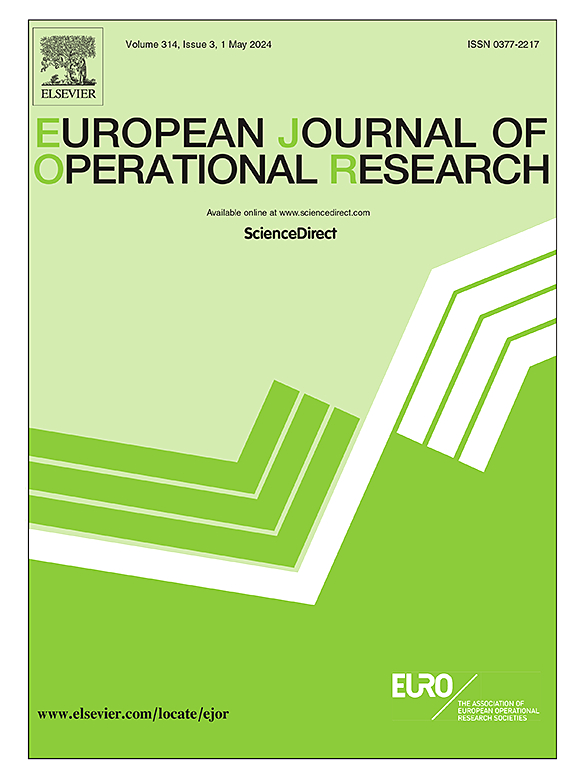重新思考绿色技术干预:不确定法规下的战略动机
IF 6
2区 管理学
Q1 OPERATIONS RESEARCH & MANAGEMENT SCIENCE
引用次数: 0
摘要
各国政府越来越依赖工业界的能力来评估实施更严格的环境法规的可行性。这种趋势不是被动地等待它们的实施,而是激励企业通过绿色活动来塑造未来的法规。为了研究在不确定监管条件下,具有不同成本结构和市场力量的企业如何在战略上采用和投资绿色技术,本文提出了一个三期博弈模型。均衡结果揭示了绿色技术采用背后的战略动机。具体而言,当单位绿色成本较高时,技术领先企业会主动采用绿色技术进行游说,从而提高竞争对手的成本,增强竞争优势。相反,当单位绿色成本较低时,这些企业采用绿色技术来抢占技术跟随企业的潜在威胁,技术跟随企业可以通过早期采用绿色技术来主导绿色市场。有趣的是,我们的研究结果表明,最有可能面临行业阻力的绿色技术不是最昂贵的,而是那些生产成本适中的技术。在这种情况下,监管的不确定性助长了隐性串通,在这种情况下,相互竞争的公司集体抵制采用绿色技术,以降低监管概率并提高利润,即使采用绿色技术在经济上是可行的。为了应对这种战略阻力,本文确定了最有效的干预机制,如补贴或惩罚。结果表明,最优干预策略不同于传统的补贴高成本绿色技术、惩罚低成本绿色技术的干预策略。相反,它应该把重点放在利用企业自愿采用绿色环保的战略动机上。这些见解对于政府设计更有效和可行的环境法规至关重要。本文章由计算机程序翻译,如有差异,请以英文原文为准。
Rethinking green technology interventions: Strategic motivations under uncertain regulations
Governments increasingly rely on industry capability to assess the feasibility of implementing stricter environmental regulations. Rather than passively awaiting their imposition, this trend incentivizes firms to shape future regulations through green activities. To investigates how firms with different cost structures and market power strategically adopt and invest in green technology under uncertain regulations, this paper proposes a three-period game model. The equilibrium outcomes reveal the strategic motivations behind green technology adoption. Specifically, when unit green cost is high, technology-leading firms voluntarily adopt green technology to lobby for stricter regulations, thereby raising rivals’ costs and strengthening their competitive advantage. Conversely, when unit green cost is low, these firms adopt green technology to preempt potential threats from technology-following firms, who could dominate the green market through early adoption. Interestingly, our findings show that green technologies most likely to face industry resistance are not the most expensive, but those with moderate production costs. In such cases, regulatory uncertainty fosters tacit collusion, where competing firms collectively resist green technology adoption to reduce regulation probability and improve profits, even though adoption is economically feasible. To counter this strategic resistance, this paper identifies the most effective intervention mechanisms, such as subsidies or penalties. The results suggest that the optimal intervention strategy differs from the traditional approach of subsidizing high-cost green technologies and penalizing low-cost ones. Instead, it should focus on leveraging firms’ strategic motivations for voluntary green adoption. These insights are vital for governments to design more effective and feasible environmental regulations.
求助全文
通过发布文献求助,成功后即可免费获取论文全文。
去求助
来源期刊

European Journal of Operational Research
管理科学-运筹学与管理科学
CiteScore
11.90
自引率
9.40%
发文量
786
审稿时长
8.2 months
期刊介绍:
The European Journal of Operational Research (EJOR) publishes high quality, original papers that contribute to the methodology of operational research (OR) and to the practice of decision making.
 求助内容:
求助内容: 应助结果提醒方式:
应助结果提醒方式:


